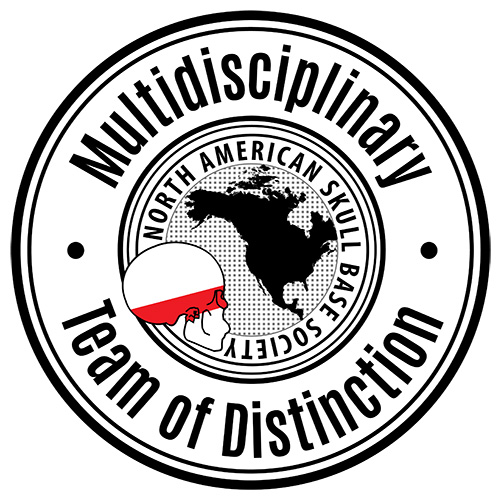The Endoscopic Endonasal Approach (EEA) is an innovative surgical technique used to remove brain tumors and lesions—some as large as softballs—all through the nose. A multidisciplinary team of neurosurgeons, otolaryngologists, ophthalmic surgeons, and spine surgeons at UPMC has developed and refined this technique, and is among the most experienced in the world.
With EEA, surgeons reach tumors and lesions of the skull base and top of the spine directly by operating through the nose and sinuses. A specially designed endoscope provides light and a lens for viewing and transmitting internal images. Highly crafted instruments are used alongside the endoscope for dissection and tumor removal. At UPMC, these surgeries are performed in dedicated, state-of-the-art suites that incorporate sophisticated imaging technology.
This minimally invasive approach uses the nose and sinuses as natural corridors to access tumors and lesions in critical areas at the base of the skull or top of the spine. The Endoscopic Endonasal Approach allows surgeons to treat many hard-to-reach tumors, even those once considered "inoperable," without disturbing the face or skull.
[Learn more about the conditions treated with EEA on the UPMC website.]
Endoscopic Endonasal Surgery (EES) has a long history at the University of Pittsburgh. The UPMC Center for Cranial Base Surgery helped pioneer minimally invasive approaches to the skull base and brain more than two decades ago and is now one of the busiest centers in the world for endoscopic treatment of pituitary tumors and tumors of the cranial base.
Paul Gardner, MD, Carl Snyderman, MD, MBA, Georgios Zenonos, MD, Eric Wang, MD, and Garret W. Choby, MD, comprise a team of experts in this field, advancing it through clinical outcomes studies, in-depth anatomical study and an international training program.
The concept of team surgery has allowed our center to expand the role of the Endoscopic Endonasal Approach (EEA) to include all pituitary tumors, regardless of size or invasiveness, and to access tumors of the skull base from the frontal sinus all the way down to the upper cervical spine and out to the cavernous sinus, Meckel’s cave, jugular foramen and beyond.
In addition, our center has the largest experience with these techniques for pediatric patients as well as for challenging lesions such as aneurysms and angiofibromas.

